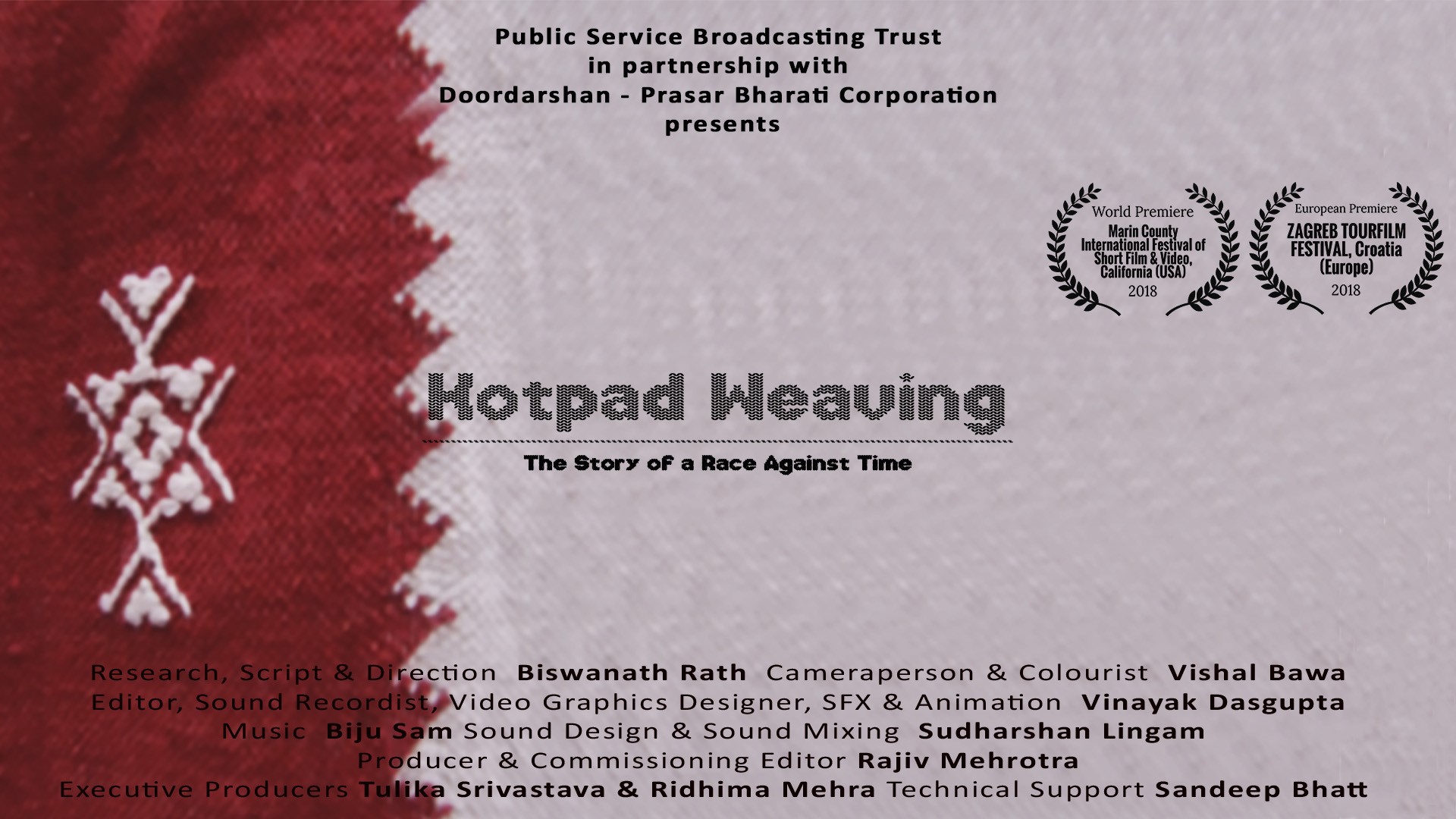Filmmaker Biswanath Rath made a short film on Kotpad weaving an heirloom of an ancient past. It is done in Kotpad, south Odisha, which is famous for a tribal textile — red and brown dyed handloom fabric. The fabric is rough to touch and it is made by the Mirgan community since ancient times.
Interestingly, the filmmaker was born just 40 kilometers away, in the same Koraput district but he had never heard of such a thing until 2016. He heard the story from a mechanical engineer, who quit Maruti Udyog Ltd to study filmmaking.
Rath’s short film titled, ‘Kotpad Weaving: The Story of a Race Against Time’ is considered first on the subject and was screened at 14 film festivals, including Ambacht in Beeld Film Festival 2019 in Amsterdam that centers on art and craft.
34 years old, Pune based rath says, “It was a journey that began when I read in an article that singer Sona Mohapatra had worn Kotpad handloom on the ramp at the Amazon Fashion Week 2016 in Delhi. I was curious. What is Kotpad handloom? I made a call to my parents because my family has lived in the region for seven to nine generations. I was shocked when they, too, did not know about Kotpad textiles. I enquired at the town level and at the district level. Hardly anybody knew. I realized that this was a story that needed to be told.”
While filing he came to know that the legacy is slowing fading as it is an inherited business and what is someday young generation denies to take it further.
“I was shocked to see that most weavers are above 60. This is a hereditary practice and, if it is not taken up by the next generation, how will it survive?” asks Rath.
The weaving and dyeing process takes upto 30 days involves boiling the roots of the Aal (Indian Madder tree). The main problem of the weavers now is that due to deforestation, the tree which was abundant in that area once is now exported from another district, Kalahandi.
“The lifestyle of the tribes has emerged from nature. The colors of the fabric are obtained from organic sources, such as Aal, castor oil, wood ash, and cow dung. Antique pit looms are used to produce awe-inspiring patterns of nature-inspired tribal motifs. The increasing price, scarcity of raw material and popularity of synthetic fabric, is threatening this tradition. My film seeks to create awareness of the crises faced by Kotpad handlooms and we should address certain issues immediately,” says Rath.
He has made the film on the theme “Made Only in India” with the Delhi-based Public Service Broadcasting Trust.
“I am driven by the story rather than the format. Ultimately, it has to be an inspiring story. Kotpad weaving has a beautiful aspect in its uniqueness,” he adds.
Rath studied mechanical engineering at NIT Warangal but he was inclined to arts since childhood. He was even secretary of the dramatics club at his college. He recalls, “I never thought of it as a full-time job. It was only in 2010, though everything was good and I was winning awards at work, I started realizing that engineering was something I was aspiring for but it wasn’t my passion. I went through a period of introspection. My father was a film lover and gave me a love for Hollywood and Bollywood. I decided that I wanted to make films.”
Rath himself writes his script, taking inspiration from the books and the news on social media. “There is an advantage to writing my own stories because I know what can be shot or executed in the limited time and budget,” he says.

